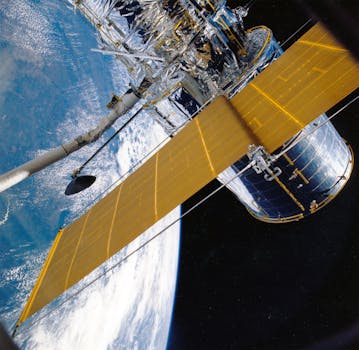
From Ground to Sky: The Evolution of Satellite Telecommunications Technology
Satellite telecommunications technology has undergone significant transformations since the launch of the first artificial satellite, Sputnik, in 1957. The evolution of satellite technology has enabled global communication, navigation, and remote sensing, transforming the way we live, work, and interact with one another. In this article, we will delve into the history and development of satellite telecommunications technology, highlighting key milestones, innovations, and future prospects.
Early Beginnings: The First Satellites
The first satellites were launched in the late 1950s, with the Soviet Union’s Sputnik 1 being the first artificial satellite to orbit the Earth. The United States soon followed with the launch of Explorer 1 in 1958. These early satellites were simple in design and function, with limited capabilities and short lifespans. However, they paved the way for the development of more advanced satellite technology, including the first telecommunications satellites.
The Advent of Telecommunications Satellites
The first telecommunications satellite, Telstar 1, was launched in 1962 by AT&T. Telstar 1 was a geostationary satellite that enabled transatlantic television transmissions, revolutionizing global communication. The success of Telstar 1 led to the development of more advanced telecommunications satellites, including Intelsat 1, which was launched in 1965. Intelsat 1 was the first commercial communications satellite, providing global coverage and enabling international telephone and television transmissions.
Modern Satellite Technology: Advances and Innovations
Modern satellite technology has undergone significant advancements, with innovations in materials, design, and functionality. The development of new satellite constellations, such as Iridium and Globalstar, has enabled global mobile communications, while the launch of satellite-based navigation systems, such as GPS and Galileo, has transformed navigation and mapping. The use of satellite technology in remote sensing and Earth observation has also become increasingly important, with applications in weather forecasting, climate monitoring, and natural disaster management.
Future Prospects: The Next Generation of Satellite Technology
The future of satellite telecommunications technology holds much promise, with the development of new satellite constellations, such as OneWeb and SpaceX’s Starlink, aiming to provide global internet connectivity. The use of advanced materials and technologies, such as 3D printing and nanotechnology, is expected to improve the performance and efficiency of satellites. The integration of satellite technology with other technologies, such as 5G and the Internet of Things (IoT), is also expected to enable new applications and services, including smart cities, autonomous vehicles, and precision agriculture.



